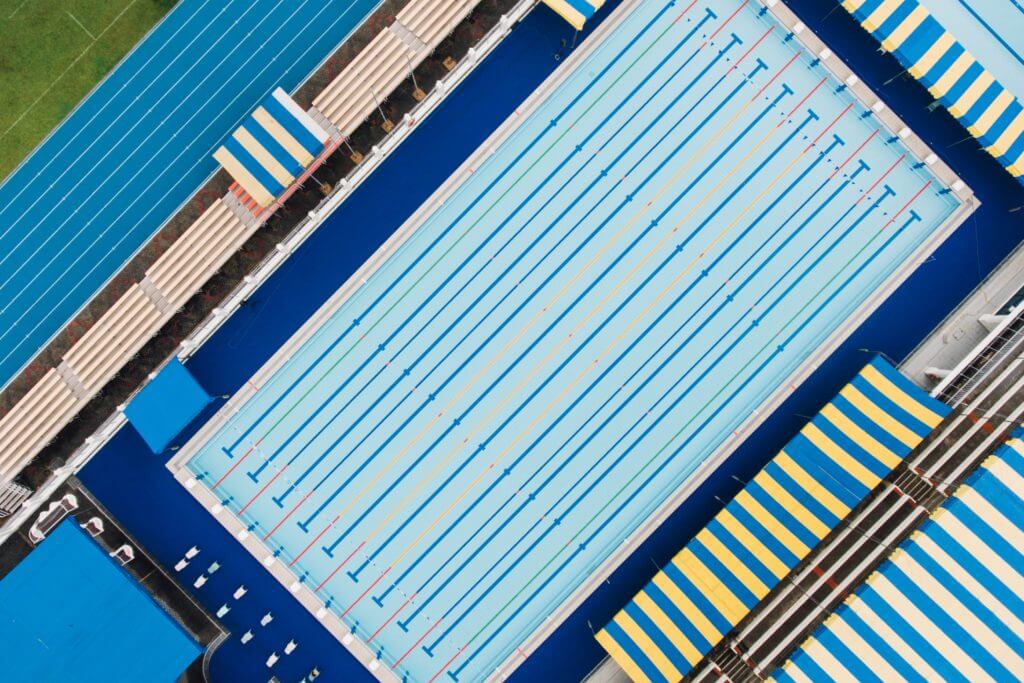As the aquatics industry becomes more aware of the harmful effects of disinfection byproducts (DBPs), concern for the safety of swimmers and pool staff is increasing.
What are disinfection byproducts?
The chemical reaction between chlorine and organic and/or nitrogenous matter that is naturally present in the pool or introduced by bathers produces disinfection byproducts. Also known as combined chlorine, DBPs can be broken into numerous categories, and the main DBPs include chloramines, trihalomethanes (THM), and haloacetic acids (HAA).
Chloramines, specifically trichloramines, are known to cause respiratory and eye irritation. Many studies have also concluded that chloramines can lead to allergies and asthma in young people. THMs and HAAs are proven carcinogens and studies indicate a link to bladder cancer.
In the United States the Model Aquatic Health Code recommends keeping the combined chlorine below 0.4 ppm for pools and spas, but it is up to each state’s health department to determine the maximum acceptable combined chlorine level that they want to enforce. Furthermore, many states including New York and Texas do not enforce a maximum combined chlorine level.
Study investigates DBPs in pool environment and staff
Last October, the Institut de recherche Robert-Sauvé en Santé et en Sécurité du Travail (IRSST) released a study detailing pool workers’ exposure to DBPs at indoor pools in Québec. The goal of the study was twofold; to measure and model the levels of DBP contamination in both the pool environment (in the water and the air) and the workers’ exposure level (within the workers’ urine and exhaled air).
The main results of the study found of the 41 indoor pools investigated, the DBP concentrations were particularly high, and varied based on the bather load and size of the pool. The staff from eight of these pools (consisting of 35 subjects) had high baseline DBP concentrations present in their bodies before coming to work and even higher concentrations of DBPs after a normal shift.
Due to the known risks associated with DBP exposure, the study recommended preventative measures to minimize DBP exposure in aquatics staff. Reducing the formation of DBPs or facilitating their elimination are both viable ways to accomplish this
Why Clear Comfort?
Until recently, facilities could decrease bather load, shock the pool, or dilute the pool with fresh water to reduce DBP levels. A better HVAC system could reduce airborne DBPs. However, these solutions are expensive and don’t solve the true cause of disinfection byproduct formation.
Now advanced oxidation, specifically Clear Comfort, is combating the true culprit, DBP formation. Independent research has proven that Clear Comfort minimizes the formation of DBPs in a case study at a YMCA. In the study, Clear Comfort reduced the HAAs by 91.5 percent, the THMs by 84.8 percent, and the chloroform (a known carcinogen) by 68.9 percent.
The advanced oxidation process prevents DBPs from forming because the highly oxidative, short lived hydroxyl radicals quickly oxidize contaminants in the water. This minimizes the necessary level of chlorine that is required to combat the organic loading which in turn decreases the amount of DBPs that are produced. By minimizing DPBs, Clear Comfort keeps pool staff and patrons healthy. Clear Comfort also helps to minimize the nasty chlorine smell in the pool area that is associated with DPBs.




